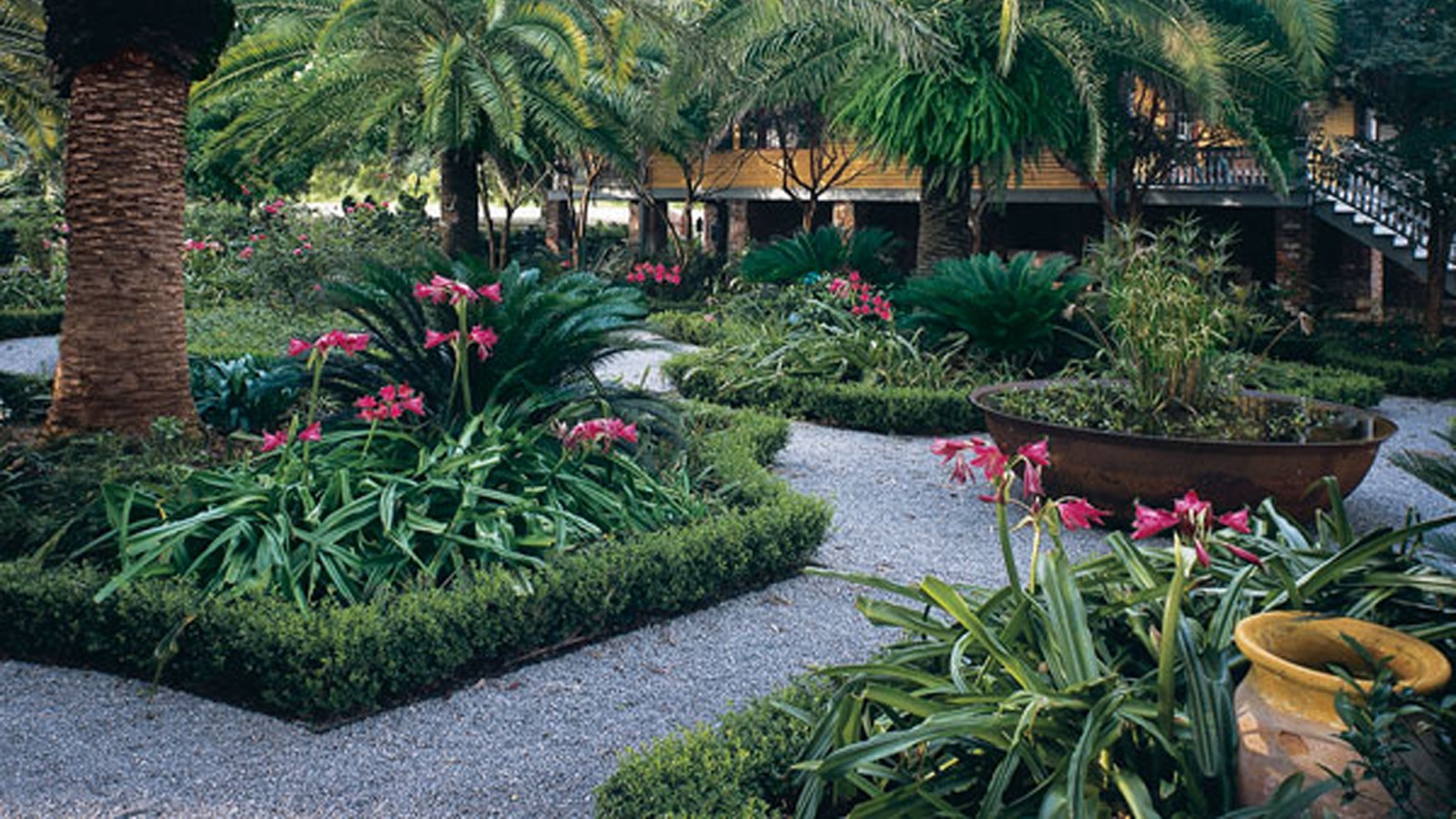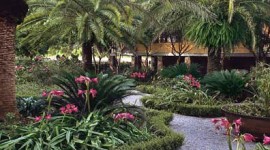Spotlight on the Garden: Laura Plantation

In 1805, Guillaume Duparc, a French veteran of the American Revolution, took possession of a 12,000-acre site just four miles downriver from Oak Alley Plantation in St. James Parish. With only seventeen West African slaves, he began to clear the land, build a home and grow sugarcane on the site of a Colapissa Indian village.
This endeavor, like many others, led to a unique blending of European, African and Native American cultures that gave rise to the distinctive Creole culture that flourished in the region before Louisiana became part of the United States . Today, Laura Plantation offers a rare view of this non-Anglo-Saxon culture. Architectural styles, family traditions and the social/political life of the Creoles have been illuminated through extensive research and documentation. African folktales, personal memoirs and archival records have opened windows to Creole plantation life – a life that was tied directly to the soil with an agrarian-based economy, a taste for fine food and a constant battle to find comfort in a hot, damp environment. Laura Plantation stands today as a living legacy dedicated to the Creole culture.




